By Dr. Richard Shakalis and Dr. John Pautienus
How the hoof structure works.
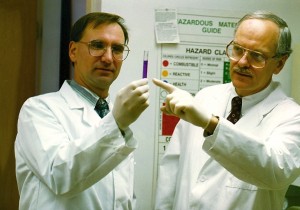 For hundreds of years people have been coating horses’ hooves with various substances for their protection and to maintain flexibility. Pine tar, paraffin, oils and salves have been passed down from one generation to the next with varying degrees of success. The basic scientific principles they were trying to achieve, maintaining the internal moisture of the hoof wall while repelling harmful substances are as valid today as they were then. To understand why the modern hoof sealants work so well, let’s review some basic biology and function of the hoof.
For hundreds of years people have been coating horses’ hooves with various substances for their protection and to maintain flexibility. Pine tar, paraffin, oils and salves have been passed down from one generation to the next with varying degrees of success. The basic scientific principles they were trying to achieve, maintaining the internal moisture of the hoof wall while repelling harmful substances are as valid today as they were then. To understand why the modern hoof sealants work so well, let’s review some basic biology and function of the hoof.
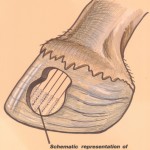
Figure 1
The hoof wall is the weight bearing structure of the hoof and it is composed of thousands of tiny hollow fibers called tubules. These tubules run vertically from the coronary band and are cemented together with a protein substance called keratin (see figure one). Layer upon layer of these tubules act effectively as springs to absorb tremendous amounts of concussive force while retaining the necessary tensile strength. The elasticity of these tubules and the hoof wall in general is dependent on its internal moisture content. This moisture is not simply water, but a mix of salts and electrolytes much like that found in an I.V. solution. Without this essential moisture, the hoof wall would dry up, crack, become brittle and generally fail at its job of a leaf spring/shock absorber. Too much moisture, on the other hand, can make a hoof too soft, mushy and fail to absorb its concussive load. We now understand that the ideal hoof conditioner maintains the natural moisture balance found within the hoof wall.
Where does the beneficial moisture in the hoof come from?
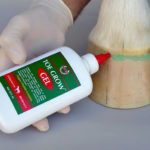
Figure 2
Where does this important moisture come from? The hoof is designed to receive at least 90 percent of its moisture from within, from the blood and lymph vessels, and a small percentage from the sole. Modern bonded sealants are so effective because they stop the evaporation of this essential moisture from escaping the hoof wall. Attempting to moisturize the hoof wall with grease or salve is mostly futile because the hoof wall is virtually non-absorbent. This is why using hoof conditioners and dressings that contain vitamins or proteins are a complete waste of time. To be of any benefit, proteins and vitamins have to pass through the digestive system and be broken down into useful building blocks by digestive enzymes. Putting vitamins and protein on the hoof wall makes as much sense as trying to eat by sticking your hand in a bowl of soup. The coronary band is the only place where products meant to condition or increase hoof growth should be applied, and even care should be taken here. This is where, along with the sole, transpiration or “breathing” occurs (see figure 2).
Why don’t wild horses have hoof problems?
You may ask, “Why don’t wild horses have all of these hoof problems? Why do I need hoof protection if I don’t have any hoof problems 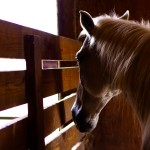 now?” Good questions whose answers lie in domestication of the horse. The periople is the protective covering that evolved to contain natural body fluids within the hoof wall while repelling harmful contaminants. Thus the hoof actually has its own natural, delicate hoof sealant. This natural sealant serves wild horses well, but it is usually lost in a domestic environment. It is inadvertently removed during the shoeing process when the hoof is trimmed, balanced, leveled and shod. To compound the problem further, the domestic horse can no longer roam free over miles of open space but is confined to smaller pastures, paddocks, and stalls. Now, with little or no natural sealant left and with the horn tubules opened from nail holes and rasping, hooves are exposed to higher concentrations of destructive uric acid and other contaminants. With the protective outer covering removed, the introduction of these agents into the hoof wall can lead to breakdown of its protein, keratin. It is important to remember that because the hoof is protein, it is potentially biodegradable. Domesticated horses need a hoof conditioner that effectively replaces the periople.
now?” Good questions whose answers lie in domestication of the horse. The periople is the protective covering that evolved to contain natural body fluids within the hoof wall while repelling harmful contaminants. Thus the hoof actually has its own natural, delicate hoof sealant. This natural sealant serves wild horses well, but it is usually lost in a domestic environment. It is inadvertently removed during the shoeing process when the hoof is trimmed, balanced, leveled and shod. To compound the problem further, the domestic horse can no longer roam free over miles of open space but is confined to smaller pastures, paddocks, and stalls. Now, with little or no natural sealant left and with the horn tubules opened from nail holes and rasping, hooves are exposed to higher concentrations of destructive uric acid and other contaminants. With the protective outer covering removed, the introduction of these agents into the hoof wall can lead to breakdown of its protein, keratin. It is important to remember that because the hoof is protein, it is potentially biodegradable. Domesticated horses need a hoof conditioner that effectively replaces the periople.
Grandpa’s Hoof Conditioner.
Your grandfather and his grandfather before him intuitively used a type of hoof conditioner called pine tar. This product acted as a precursor to the modern sealants as it helped to retain moisture in the hoof wall. Pine tar, unfortunately, had its drawbacks, but Grandpa was on the right track. Later came various products that contained vegetable oil, animal fat, and petroleum-based ingredients that were used with limited success to coat the hoof and fill in the nail holes. These dressings usually remain fluid (wet), sticky, and as such, attract contaminants instead of repelling them. They tend to breakdown quickly when exposed to the environment.
Their applications actually may be counter-productive because they can serve as a bacterial and/or fungal growth medium when they fester in a small crack or nail hole. These organisms produce enzymes and exotoxins that can break down collagen and protein in the hoof wall. If you do not get hoof wall disease, the least that can happen is that the hoof can get soft and punky at the nail holes. If this happens, your horse will throw more than his fair share of shoes. The ideal hoof conditioner should dry hard when cured, and be able to seal out harmful contaminants and resistant abrasion.
Other added ingredients found in some hoof conditioners, formaldehyde and acetone, are powerful drying agents and can be downright harmful to horses, humans and the environment. Their use has been associated with cancer and liver damage. Use them with caution, or better yet, not at all. Further, these sealants or dressings do not have any resistance to abrasion and can be easily wiped off. As a result, they need to be reapplied frequently, even daily, to get the maximum benefit.
The new generation of hoof conditioners!
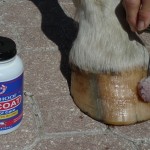
TOPCOAT Hoof Conditioner uses natural protein emulsions.
The new generation of hoof conditioners has come on the market is recent years. These natural protein coatings
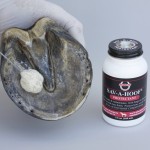
Save-A-Hoof Protectant emulsions protect sole & frog
cure (dry hard) to the entire hoof capsule – including the hoof wall, sole, and frog. They outperformed and outlast hoof oils and pine tar used by grandpa. These new coatings are made of a new class of protein emulsions that are more durable and extremely effective at sealing in the essential moisture and sealing out the harmful substances. Their function is to allow the hoof to maintain its naturual moisture balance in order to remain flexible. Some products work better than others and do not require reapplication as often. They also contain additional ingredients that help prevent and fight hoof disease. Synthetic hoof conditioners contain dangerous solvents and block transpiration. They cannot be applied to the bottom of the feet where the hoof needs to breathe.
Modern technology has given us new products that are now available. With products like these available for the horse today, even grandpa would approve!




